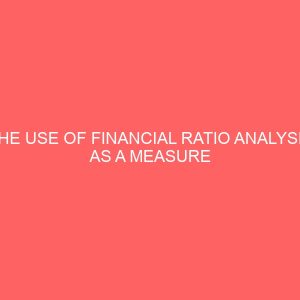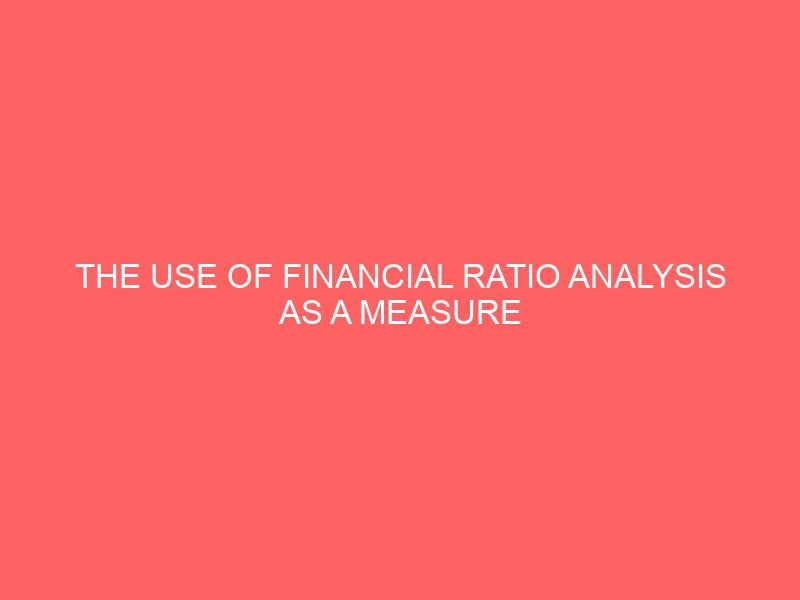Description
TABLE OF CONTENTS
1.1 Statement of the Problem.. 2
1.2 Objectives of the Study. 3
1.3 Significance of the Study. 3
2.1 Users of Financial Ratio Analysis. 5
2.2 Nature of Ratio Analysis. 6
2.3 Standards of Comparison.. 7
2.4 Types of Financial Ratio Analysis. 8
2.6 LongTerm Solvency Ratios. 10
2.6.2 Shareholders Equity Ratio. 15
2.6.4 Capital Gearing Ratio. 16
2.6.5 Fixed Assets to LongTerm Funds Ratio. 17
2.6.8 Debt Service Coverage Ratio. 18
2.7 ShortTerm Solvency Ratios. 19
2.7.2 Quick Ratio or Liquid Ratio. 21
2.7.3 Absolute Liquid Ratio Super Quick Ratio22
2.8.1 Return on Capital Employed ROCE or return on Investment ROI.24
2.8.2 Earnings per Share EPS26
2.8.3 Cash Earnings per Share. 27
2.8.4 Gross Profit Margin.. 28
2.8.8 Return on Shareholders Funds or Return on Net Worth.. 32
2.9 Activity Ratios or Turnover Ratios. 33
2.9.4 Assets Turnover Ratios. 37
2.9.5 Working Capital Turnover Ratio. 38
2.9.6 Sales to Capital Employed Ratio. 38
2.11.1Dividends Payout Ratio. 40
2.11.4Price Earnings Ratio P/E Ratio42
2.12 Utility of Ratio Analysis. 43
2.12.1Performance Analysis. 43
2.12.4Competitive Analysis. 45
2.13 Cautions in using Ratio Analysis. 47
2.13.1Standards for Comparison.. 47
2.13.4Different Definitions of Variables. 49
3.3.1 Primary Data and Sources. 52
3.3.2 Secondary Data and Sources. 54
3.4 Method of Data Analysis. 55
3.5 Restatement of Hypothesis. 57
4.0 Data Presentation and Analysis. 58
4.2 Data Preparation and Analysis. 58
4.2.1 Time Series Business. 59
5.0 Summary, Conclusion, and Recommendation.. 65








Reviews
There are no reviews yet.